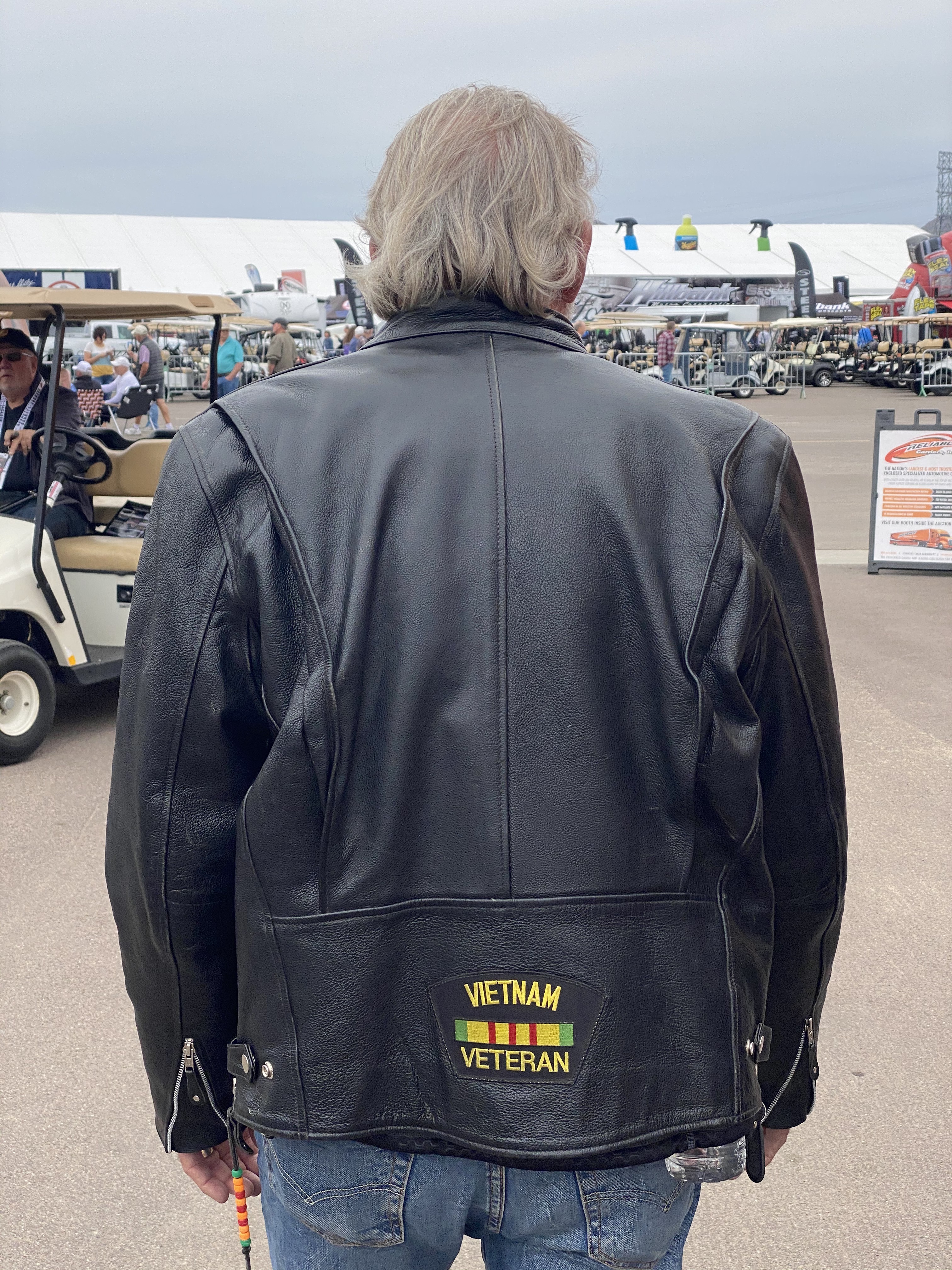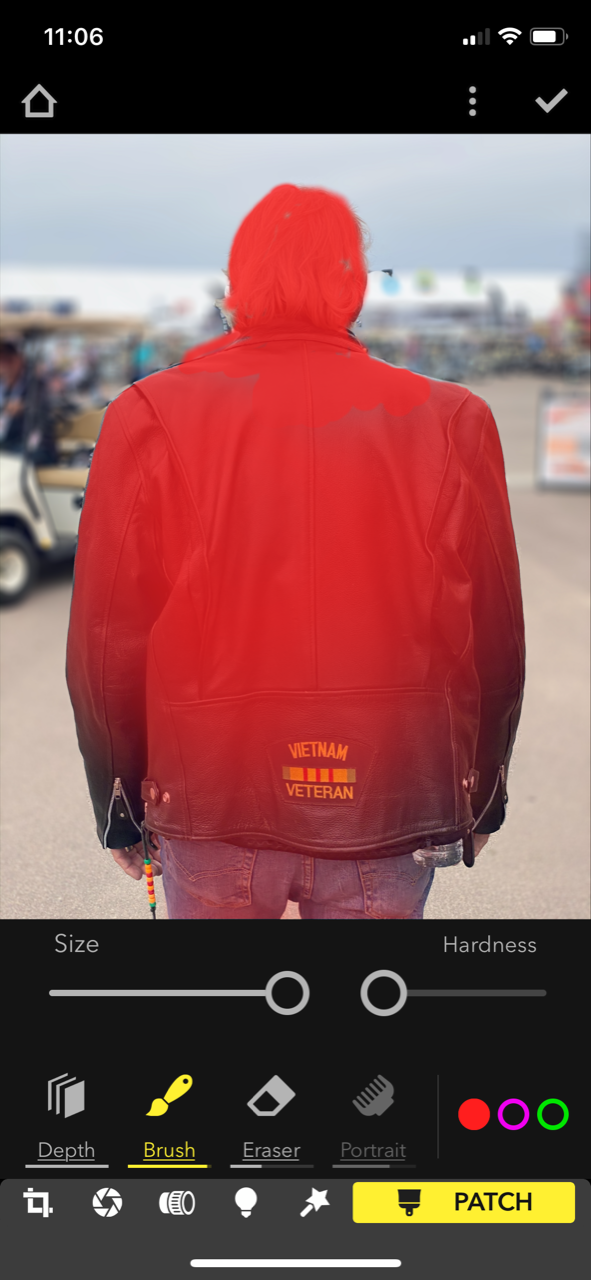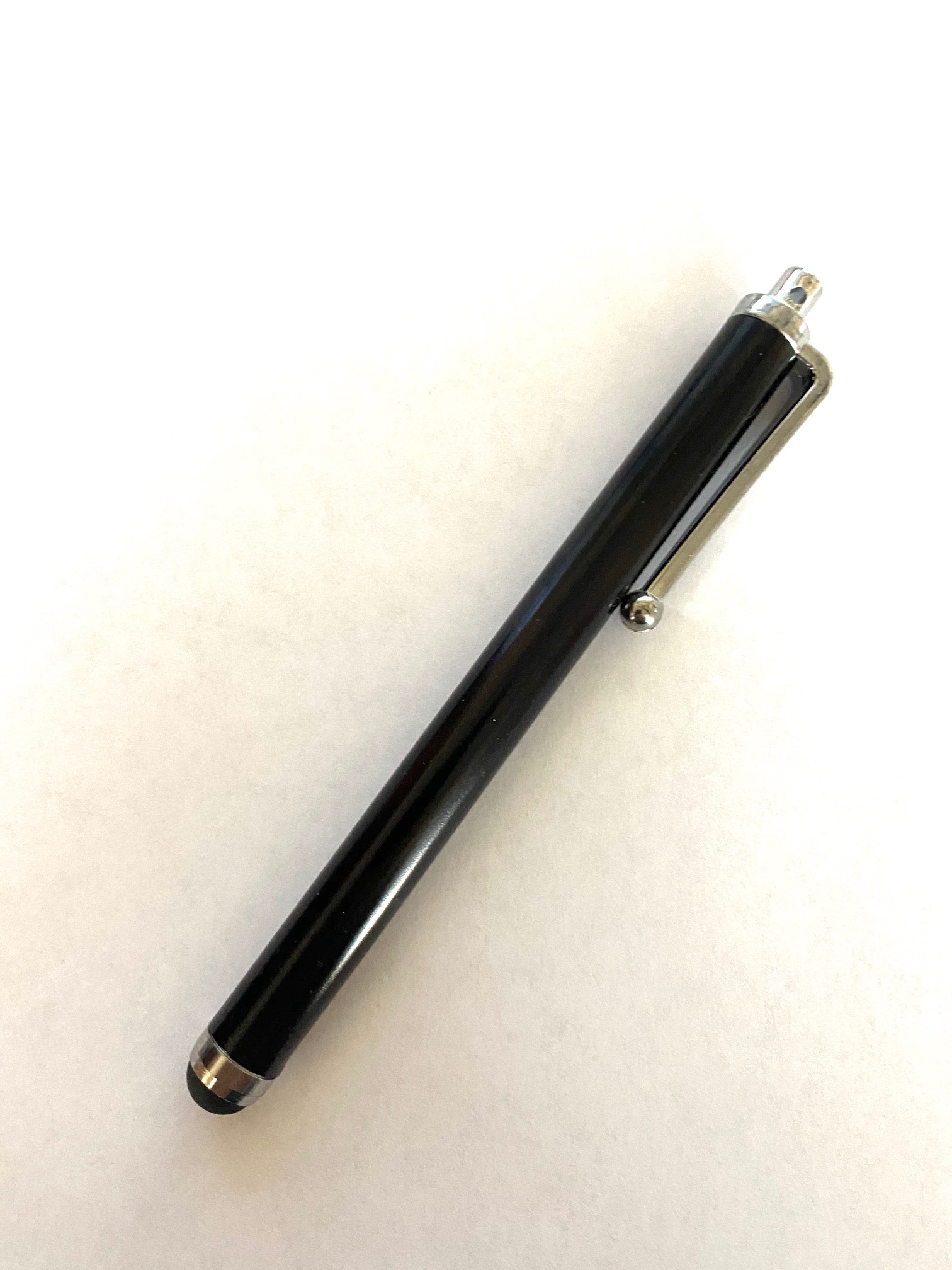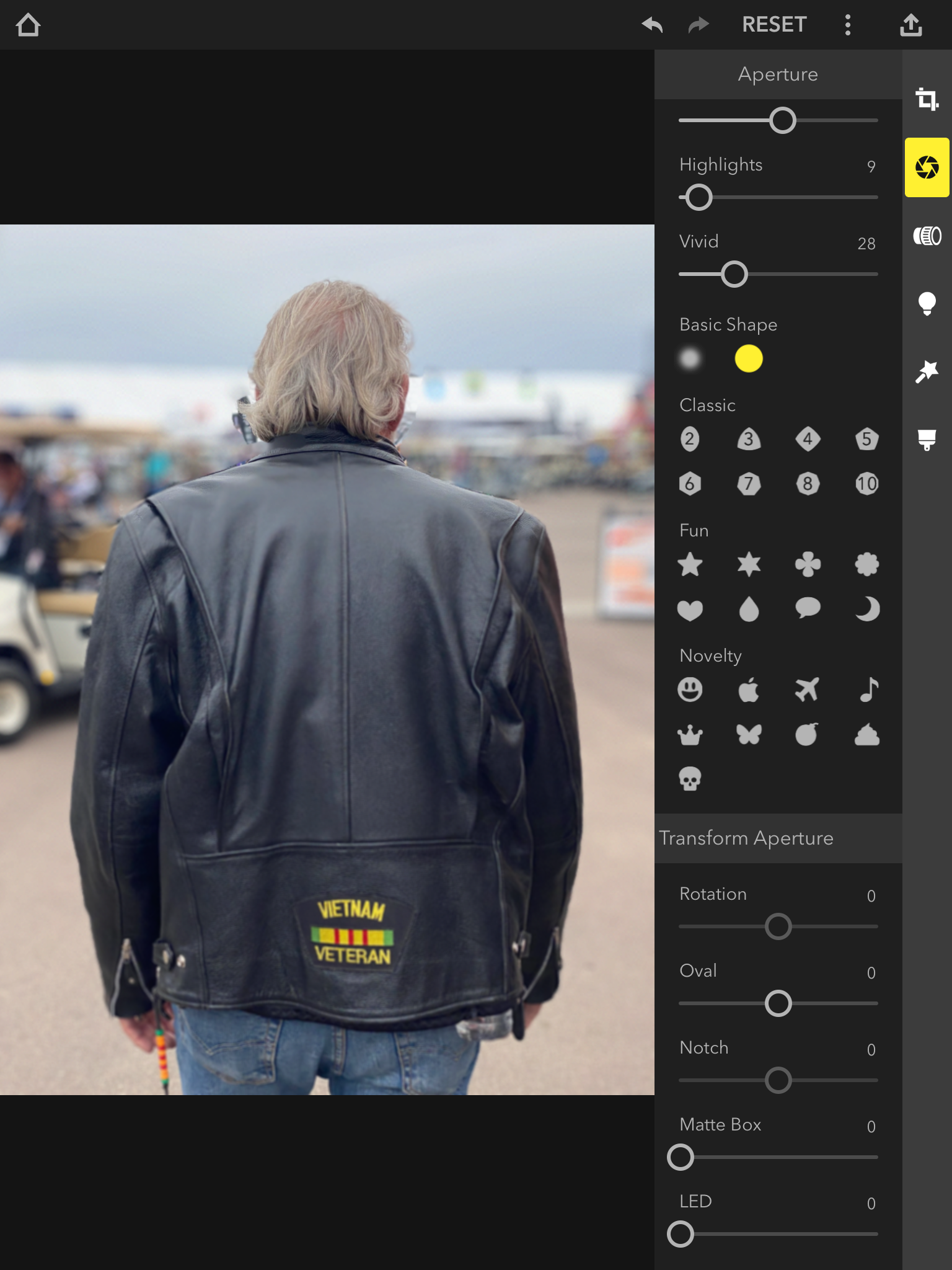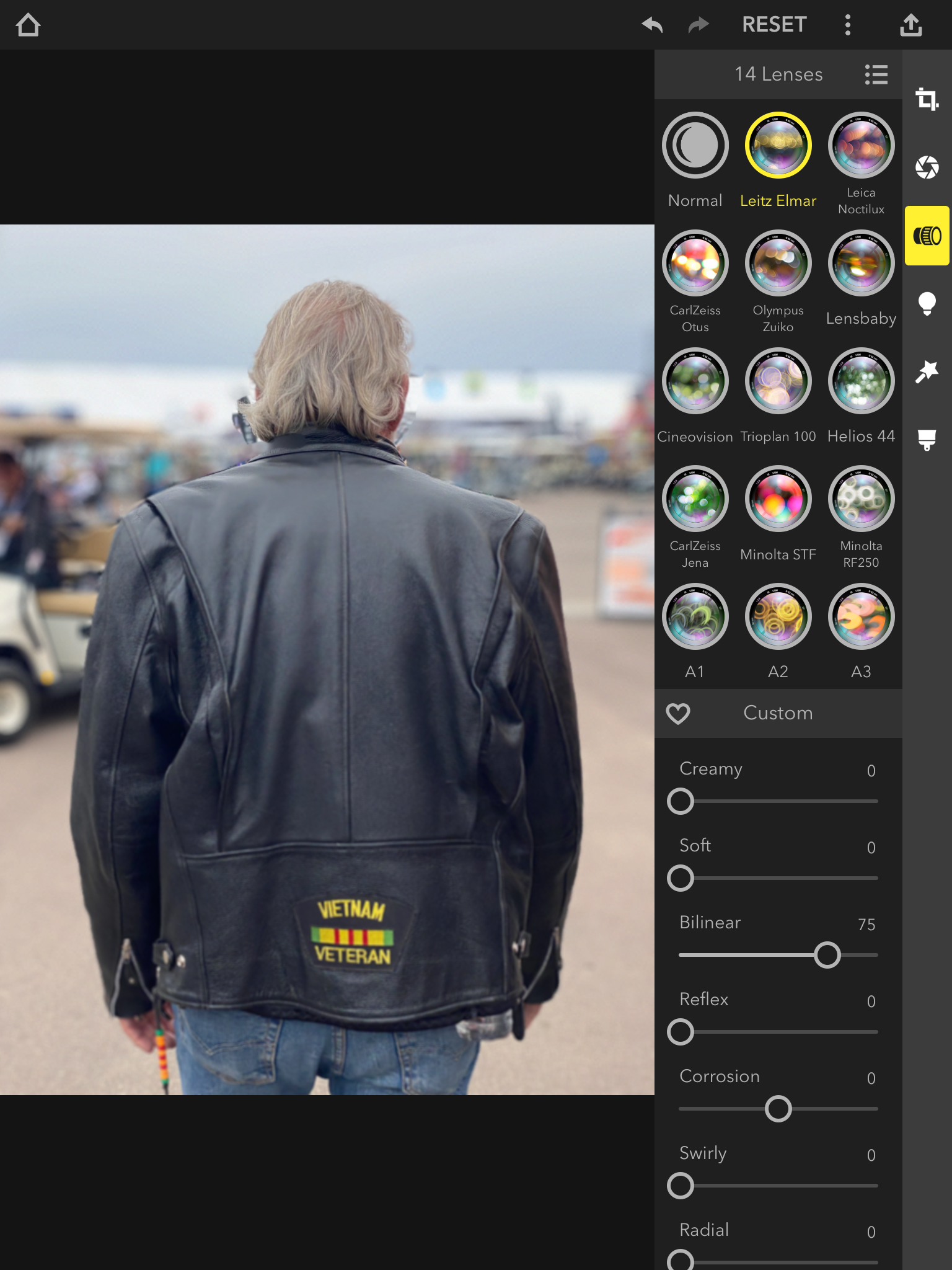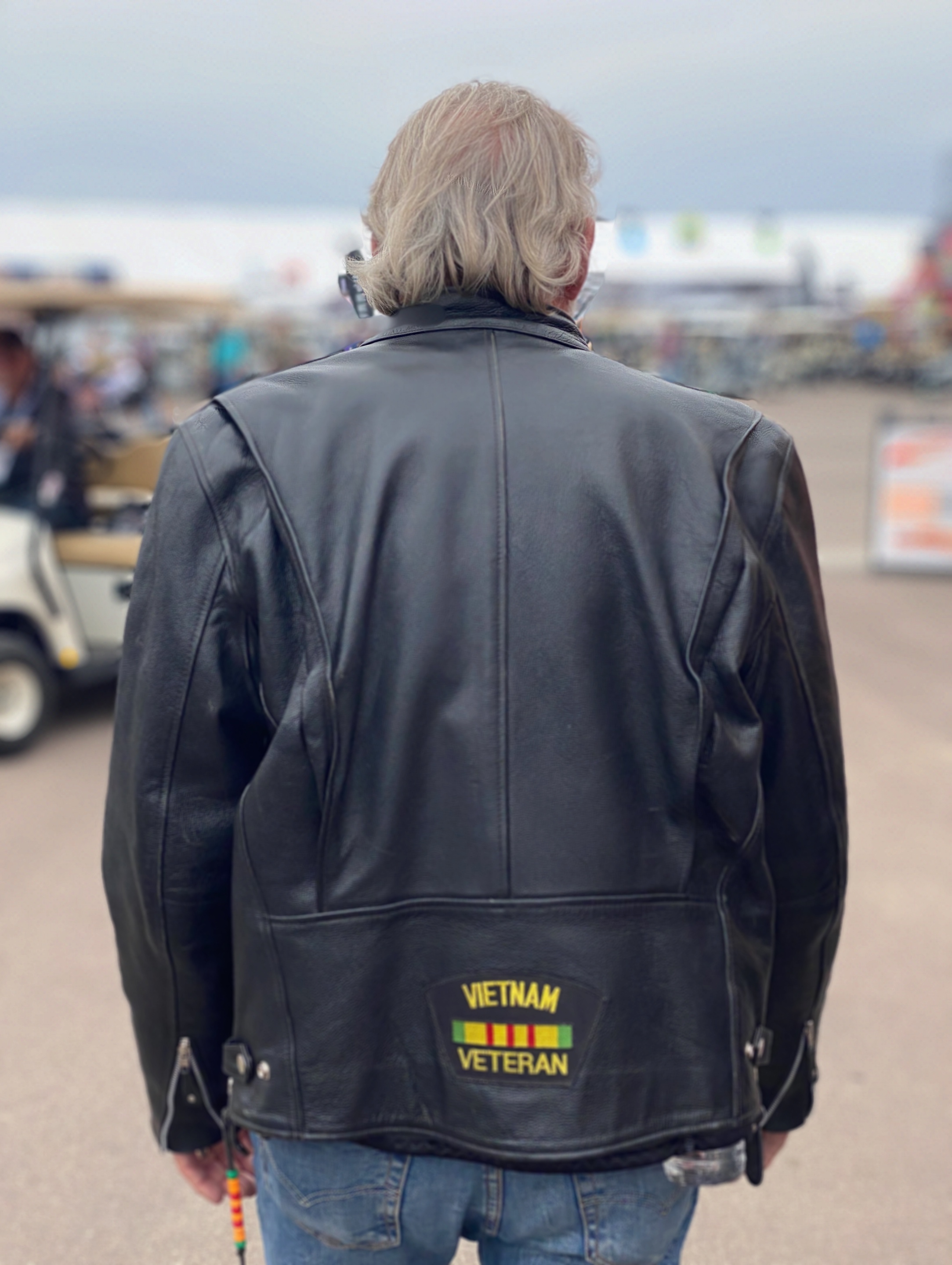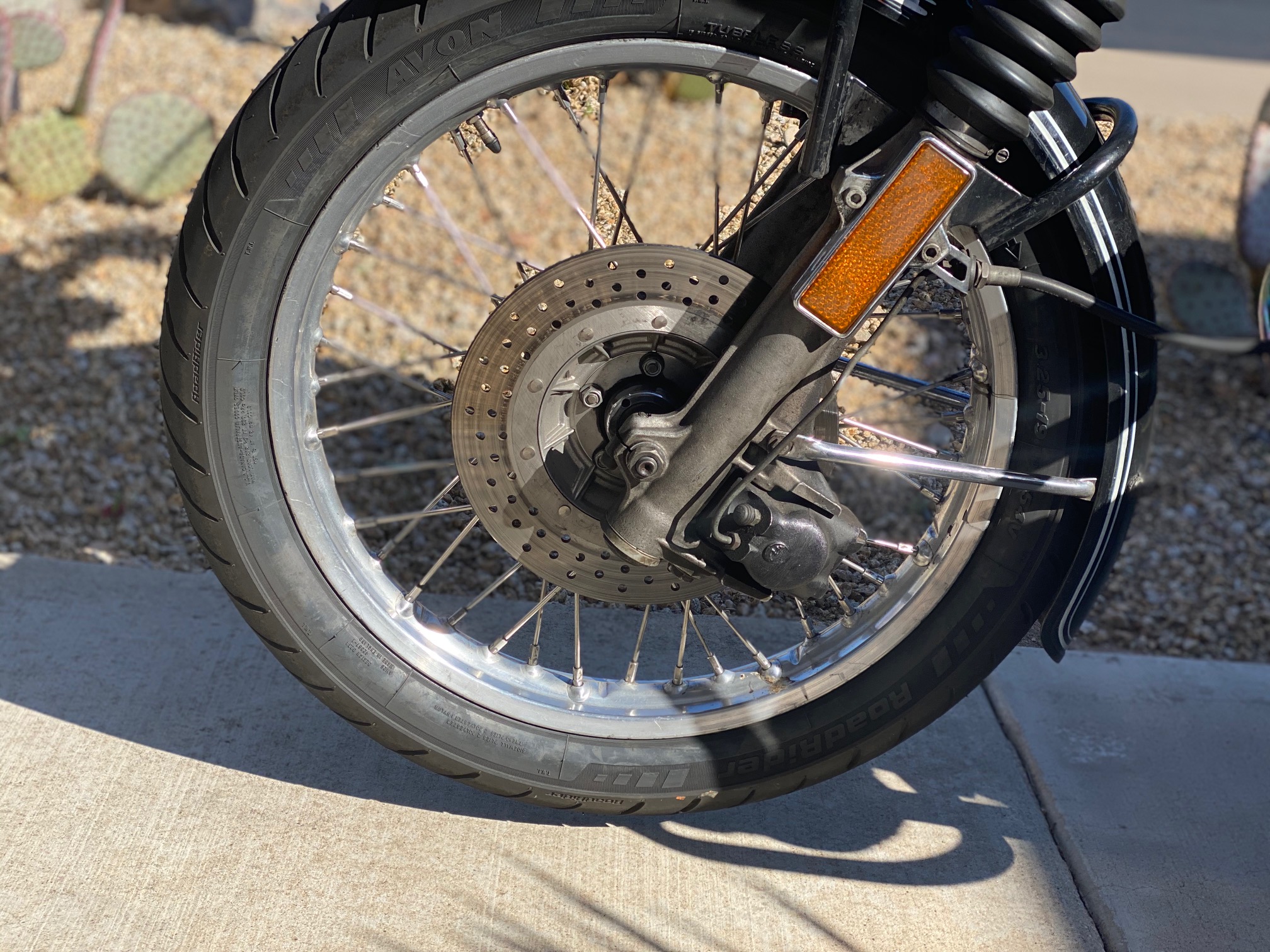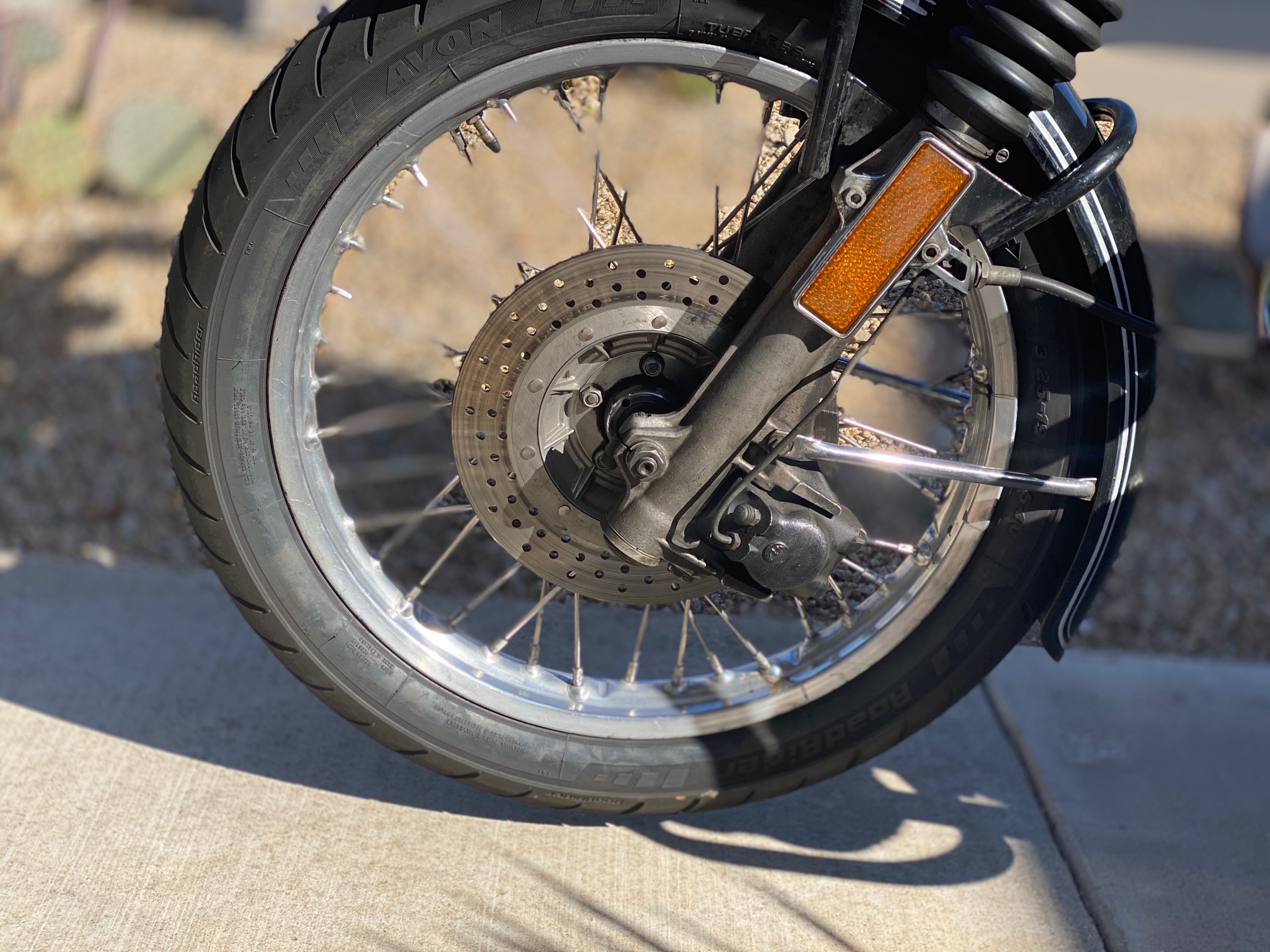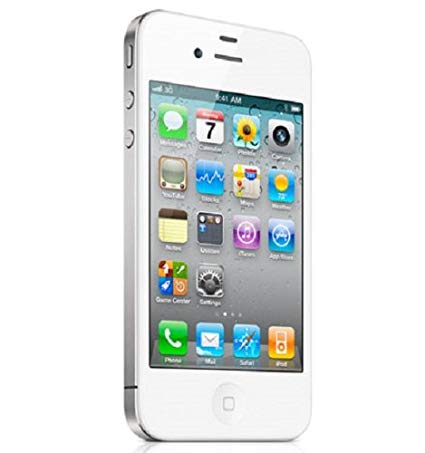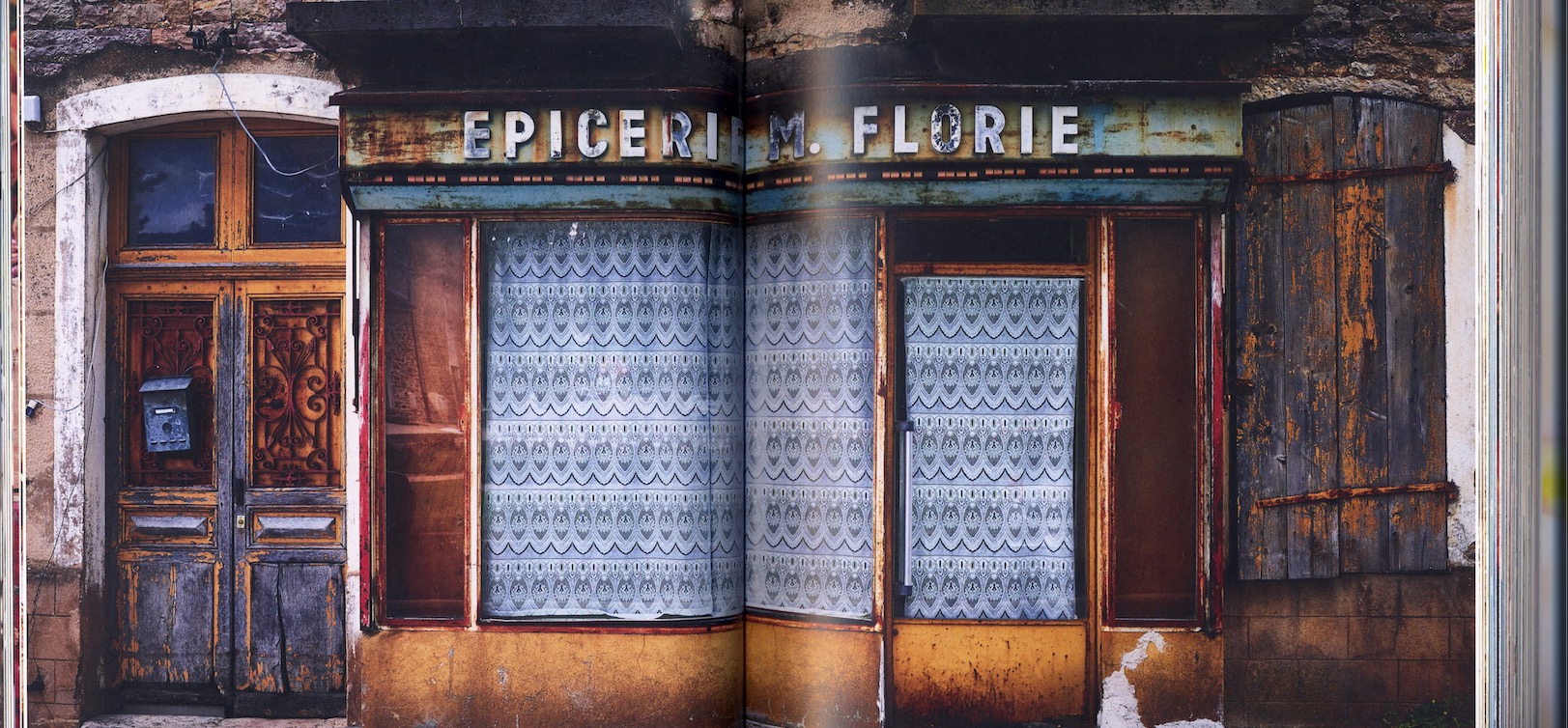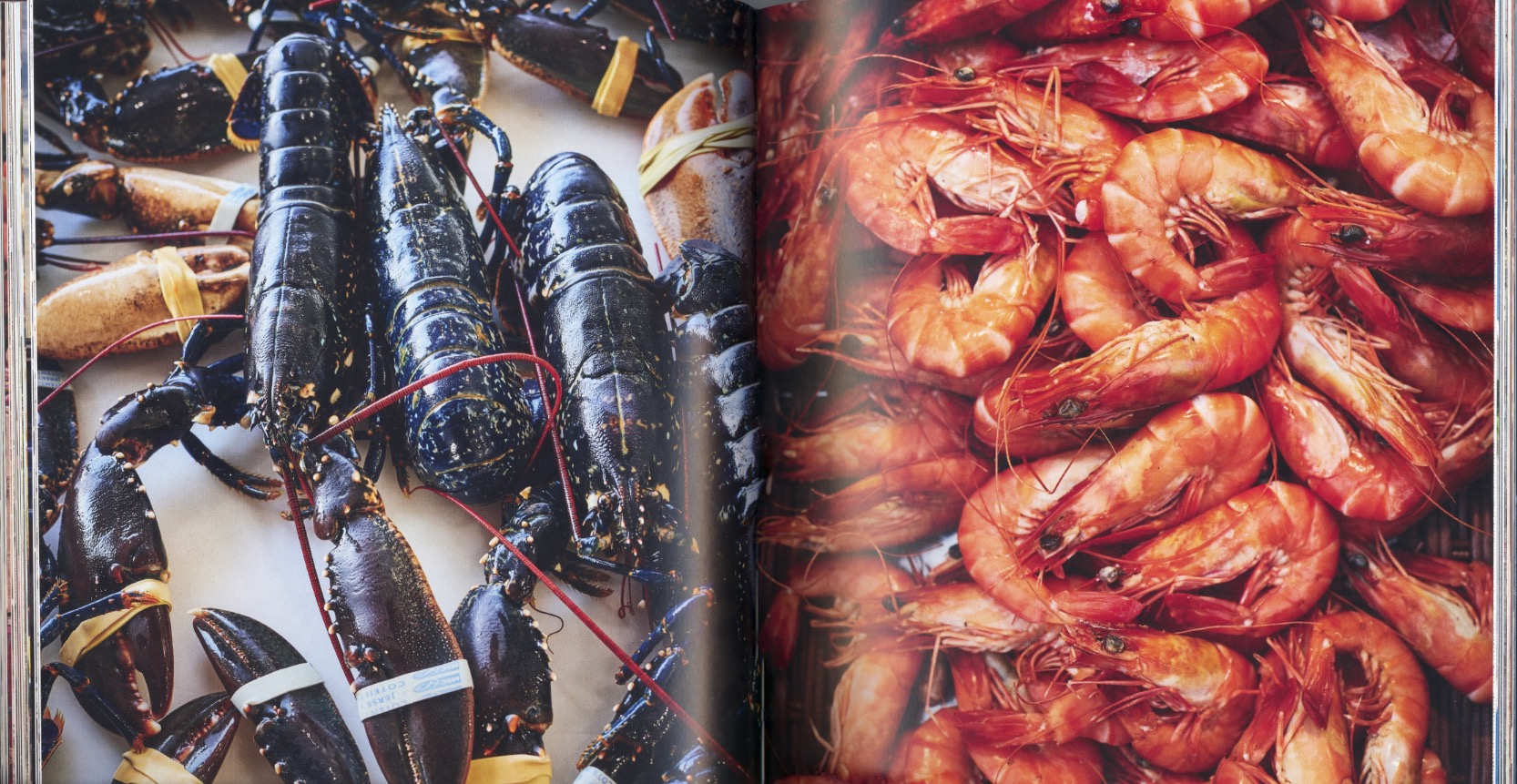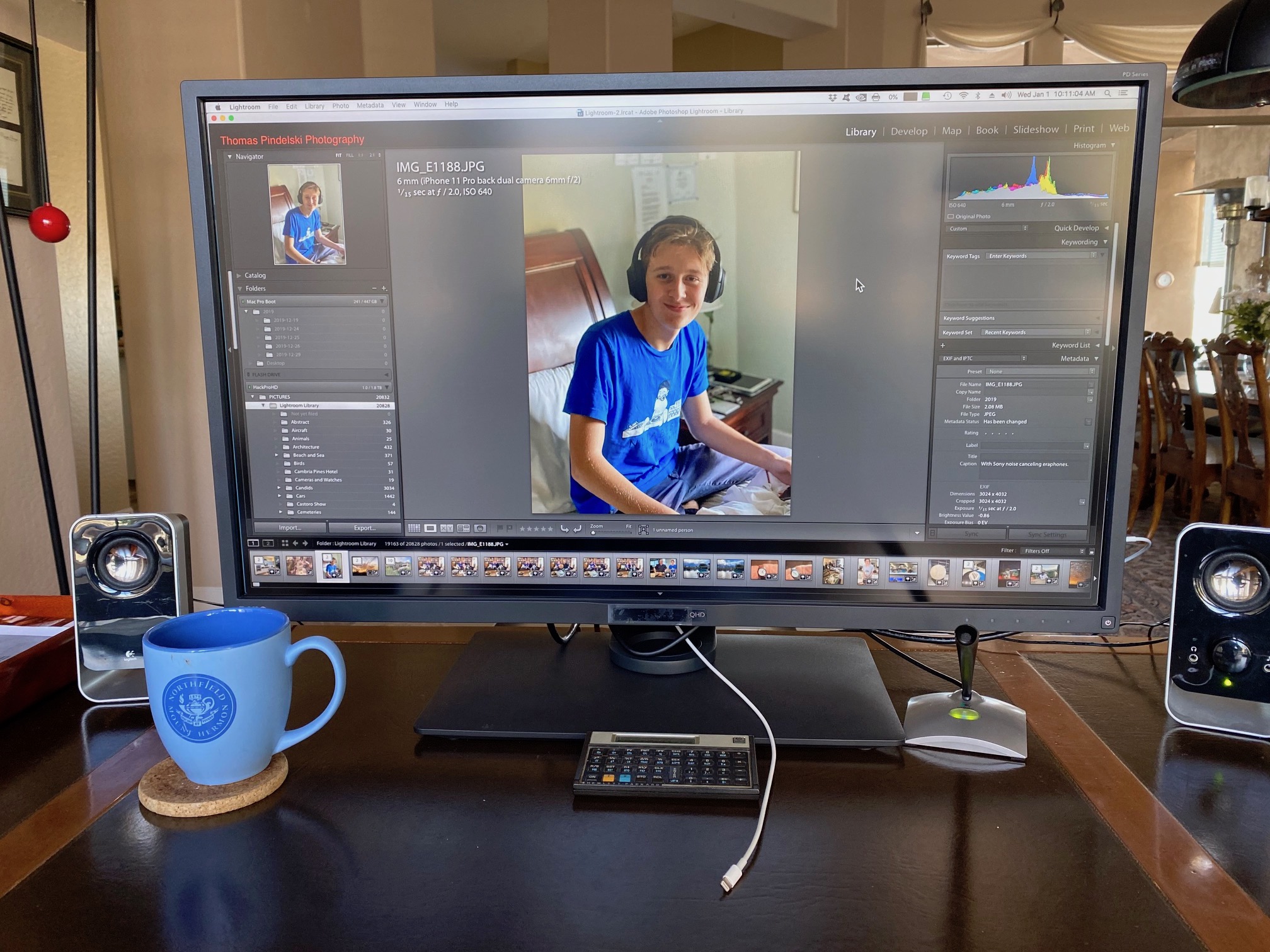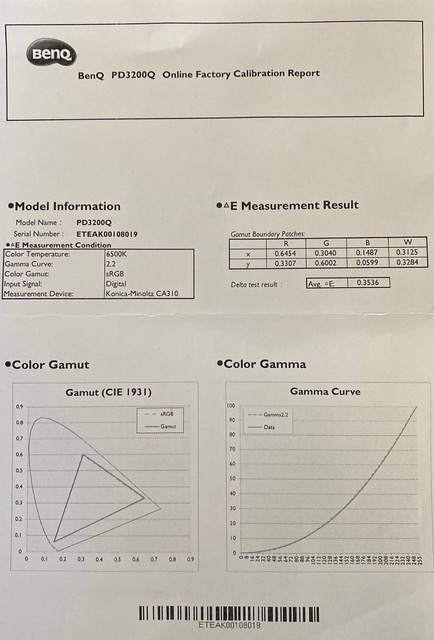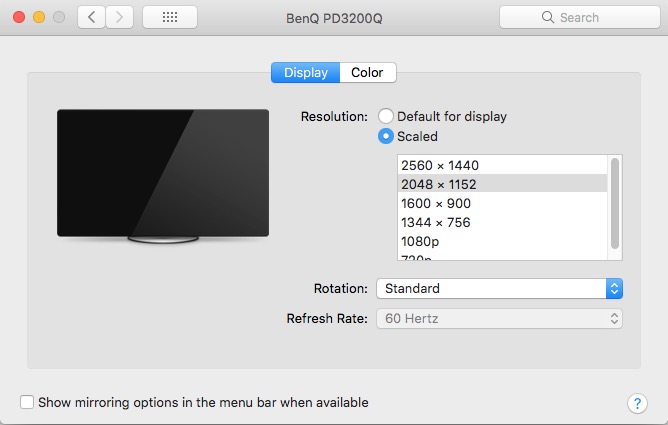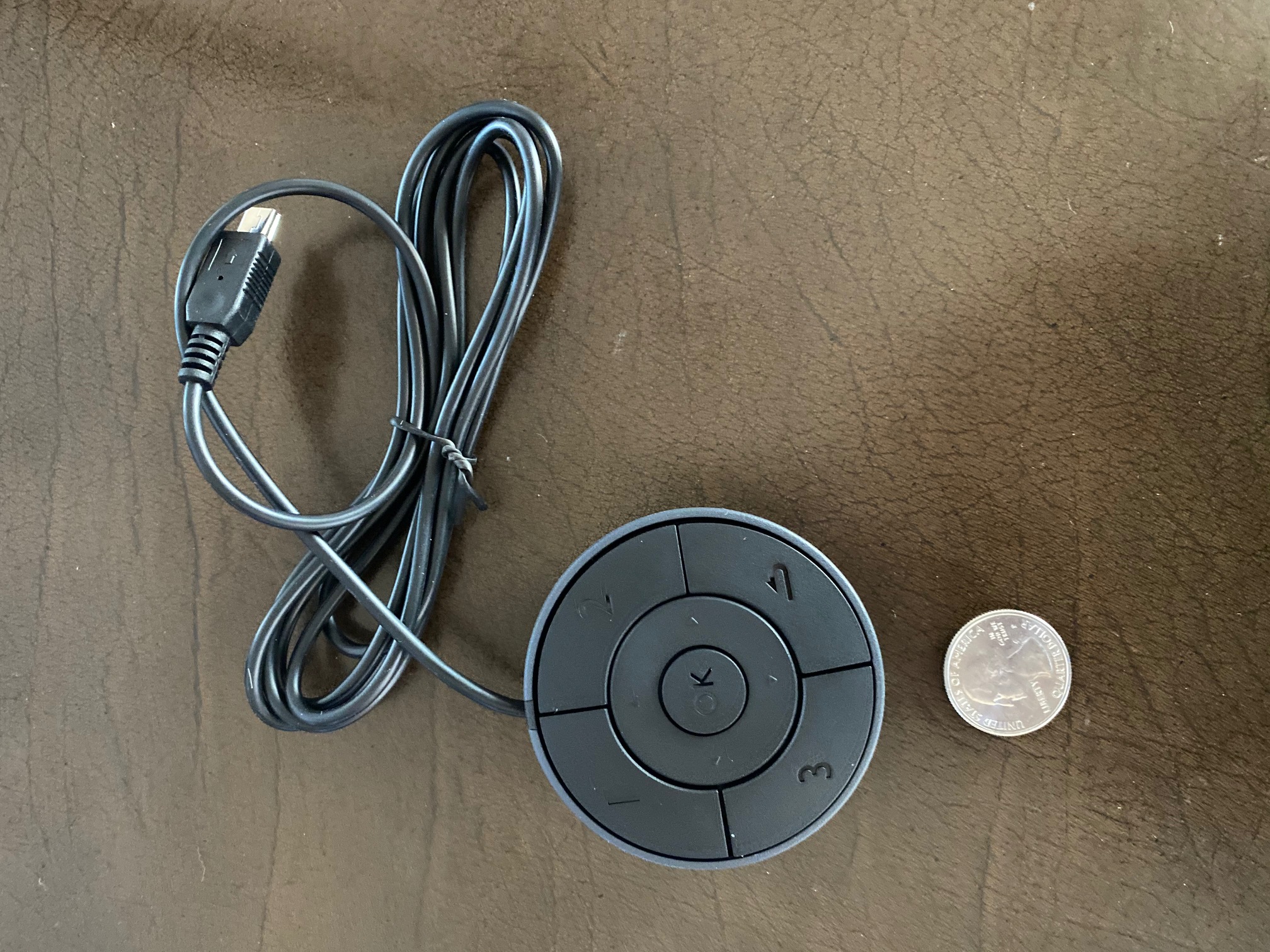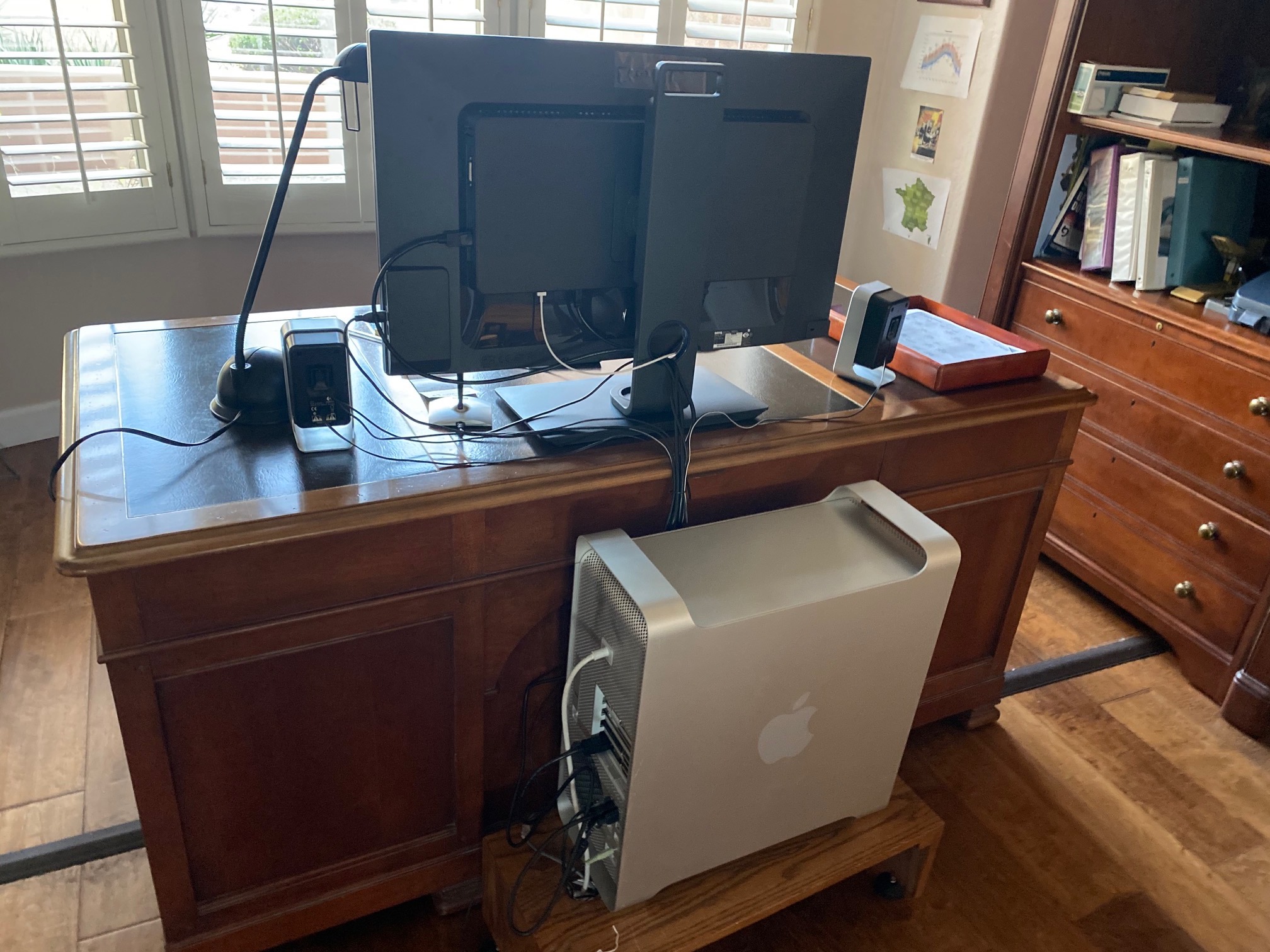Avoiding ‘Woopsie’.
When snapping away with the iPhone at the car show the other day, I kept the iPhone’s camera turned on at all times and in my left hand, ready for instant action. Half way through this sojourn I had what can only be described as a Big Moment and almost dropped the bloody thing on the ground. Hard unyielding ground, protective case be damned. These things never work when needed; I use mine to hold credit cards and my driver’s license.
So it occurred to me that what is called for is a wrist tether and after reviewing the awful choices on Amazon I decided to craft my own. A custom tether – I’m selling these for $499, free shipping, to all iPhone 11 Pro owners. Lesser models need not apply. Comes with an autographed Certificate of Authenticity.
A 3 foot Lightning cable is purchased form Amazon for all of $7.
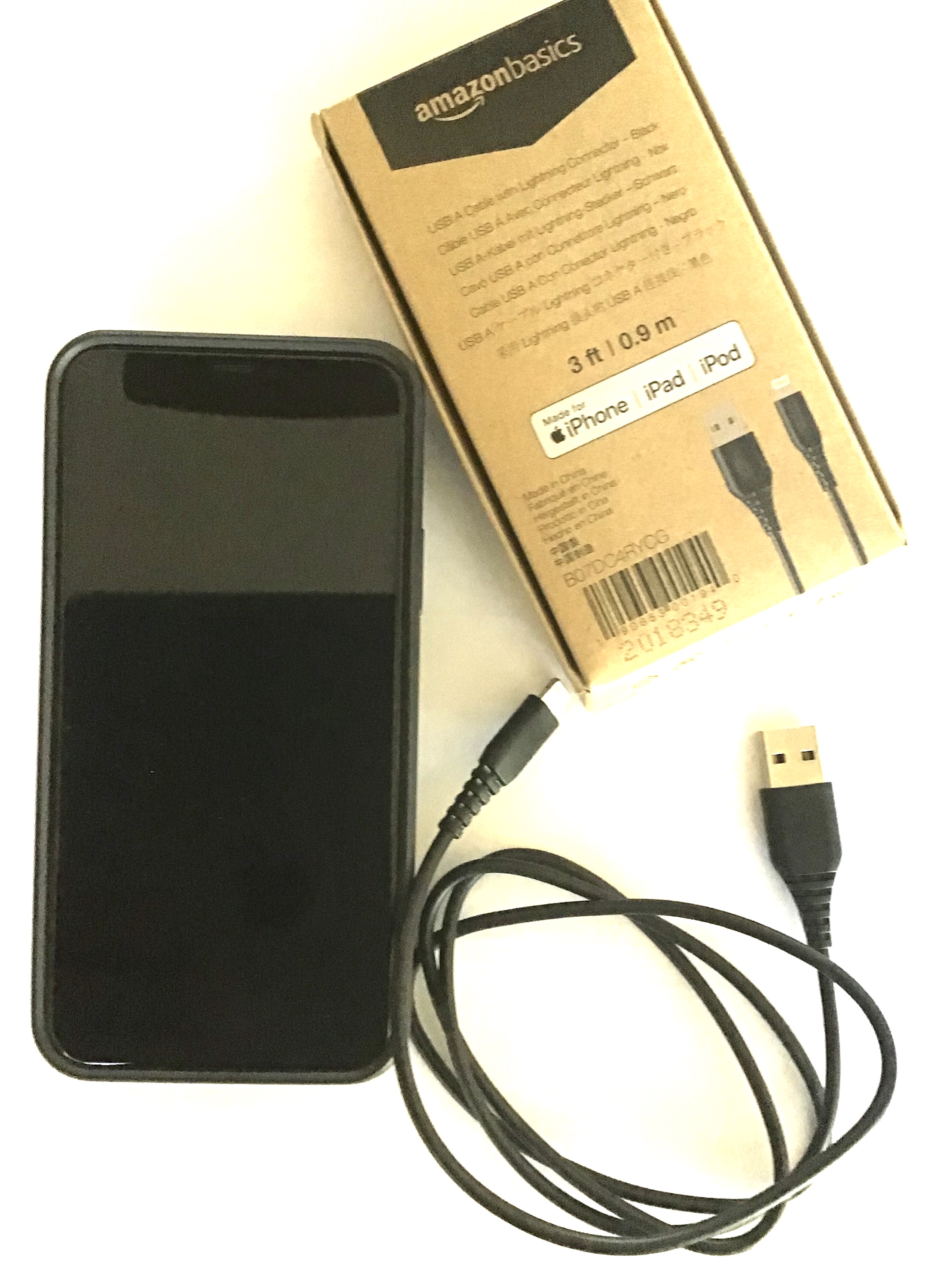
It’s cut at 22″ from the Lightning connector end.
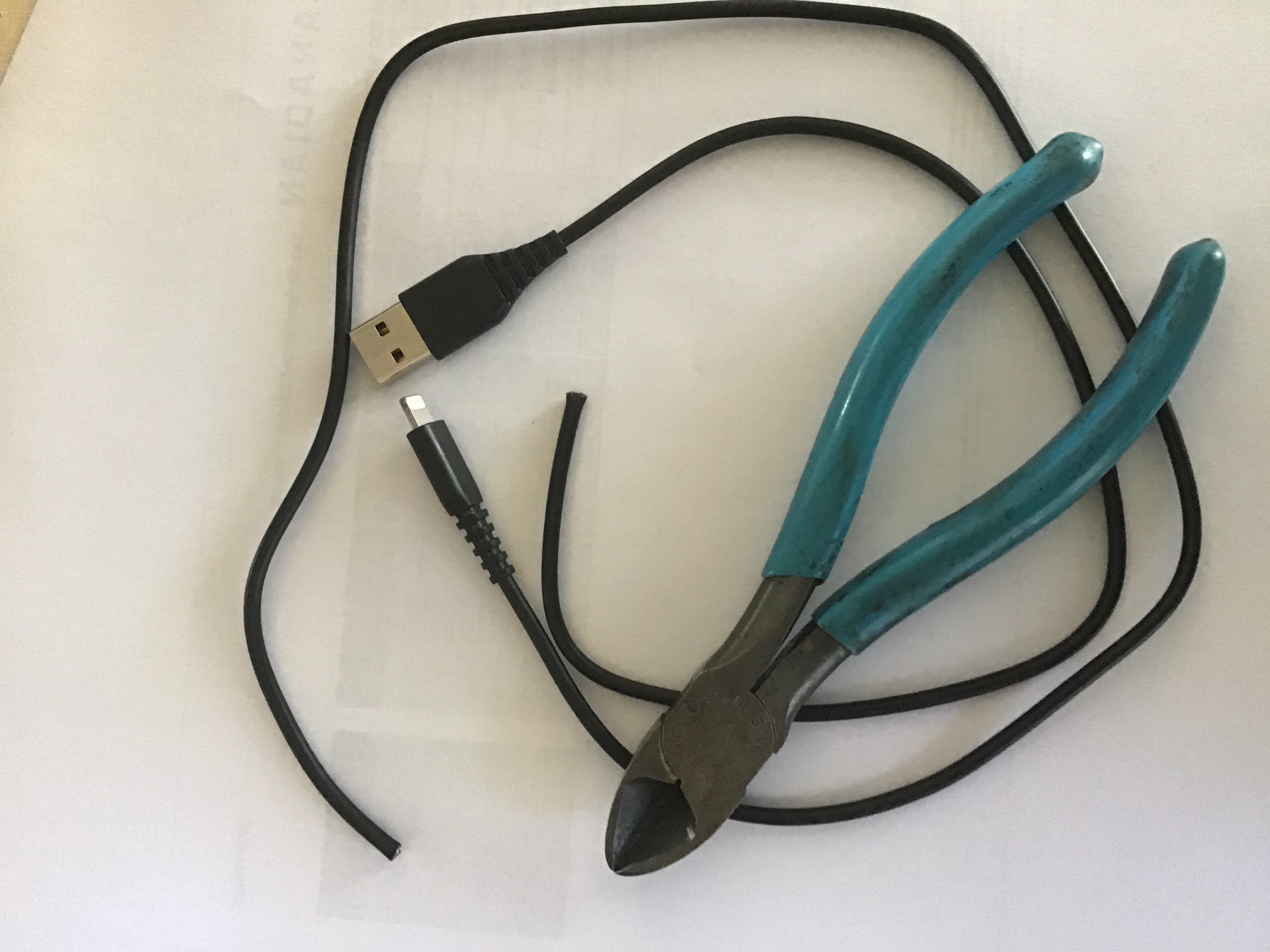
Two pieces of heat shrink tubing are cut to 3″ (small) and 4″ (large) length. The small must accommodate two passes of the cable. The large must be able to slip over the Lightning connector.
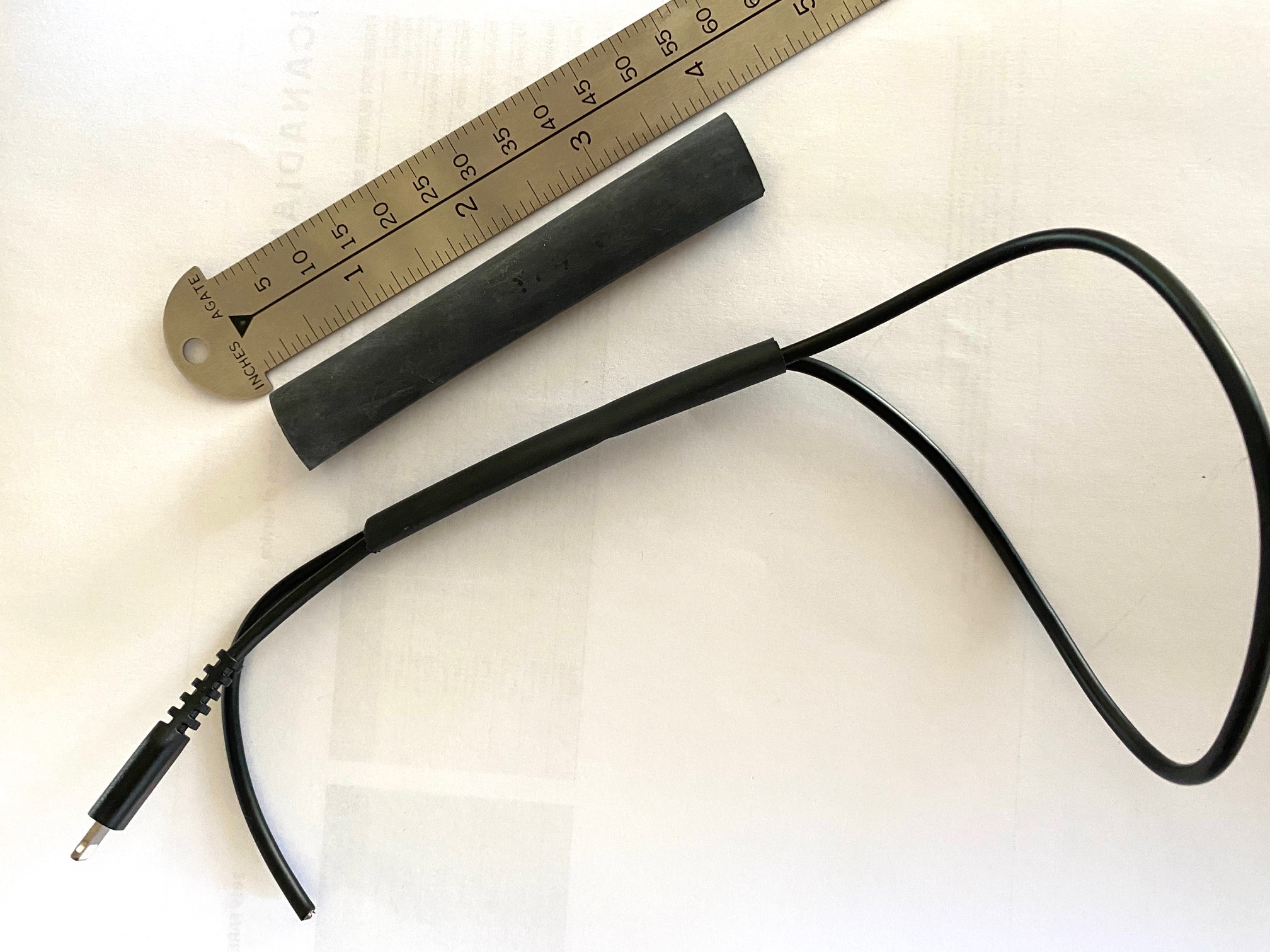
The cable is doubled up after measuring for the correct wrist strap loop diameter. Leave 2.5″ of the tail exposed and heat shrink the tubing in place.
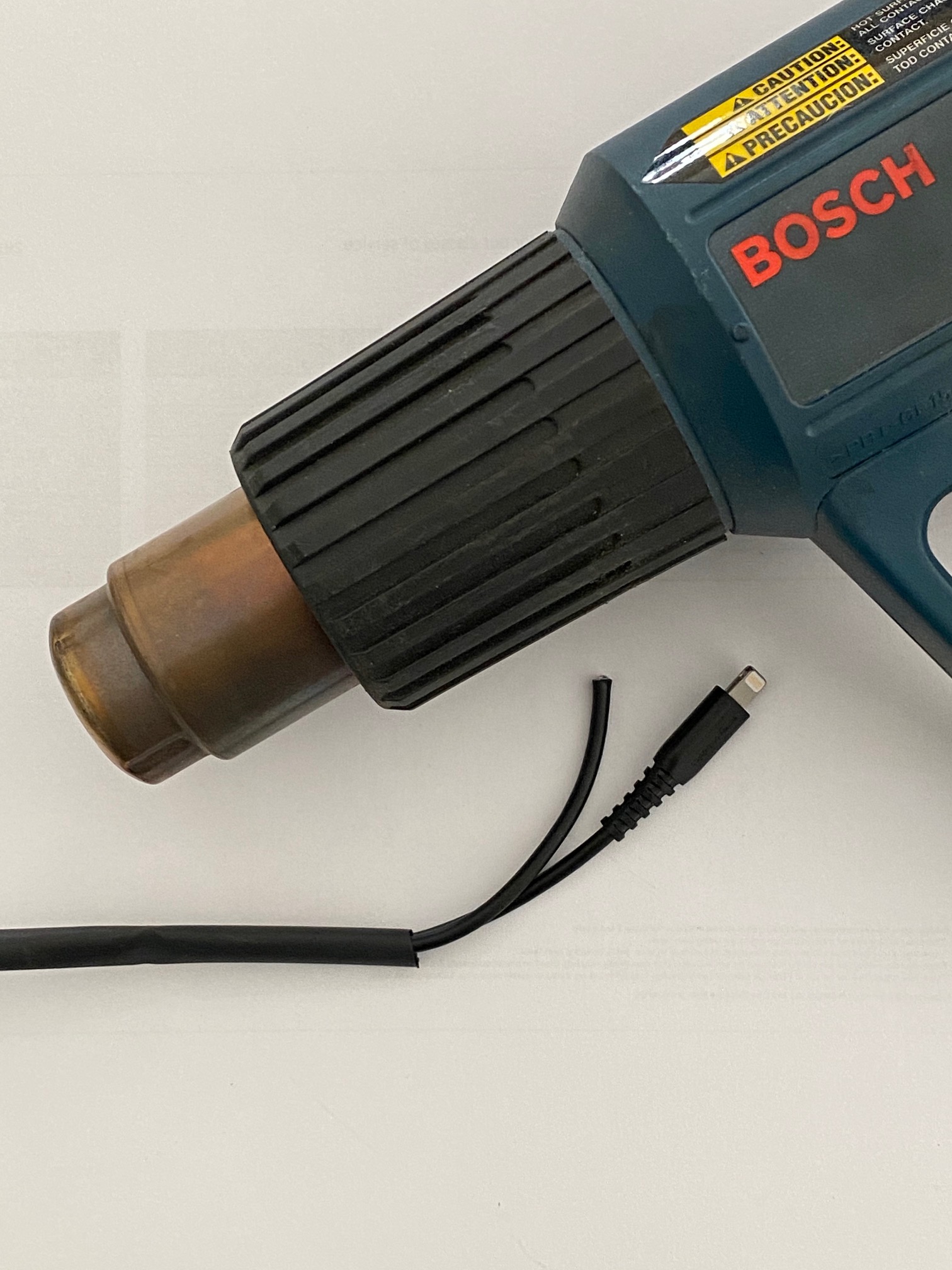
Next the broad diameter tubing is slipped over the Lightning connector and over the small diameter shrunken tubing; the tail is doubled back into the large tubing.
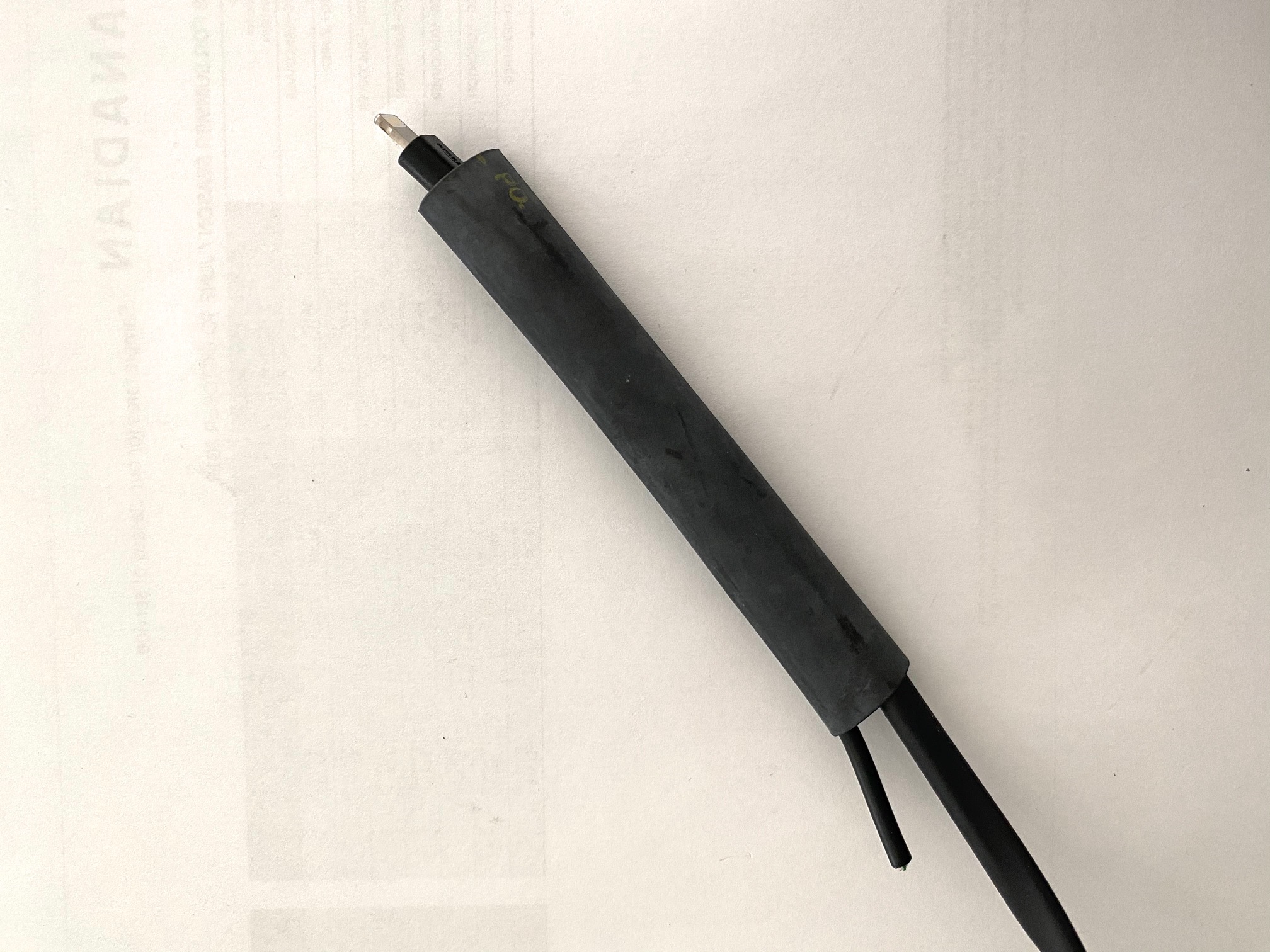
The large diameter tubing is heat shrunk into place and the wrist strap/tether is complete.
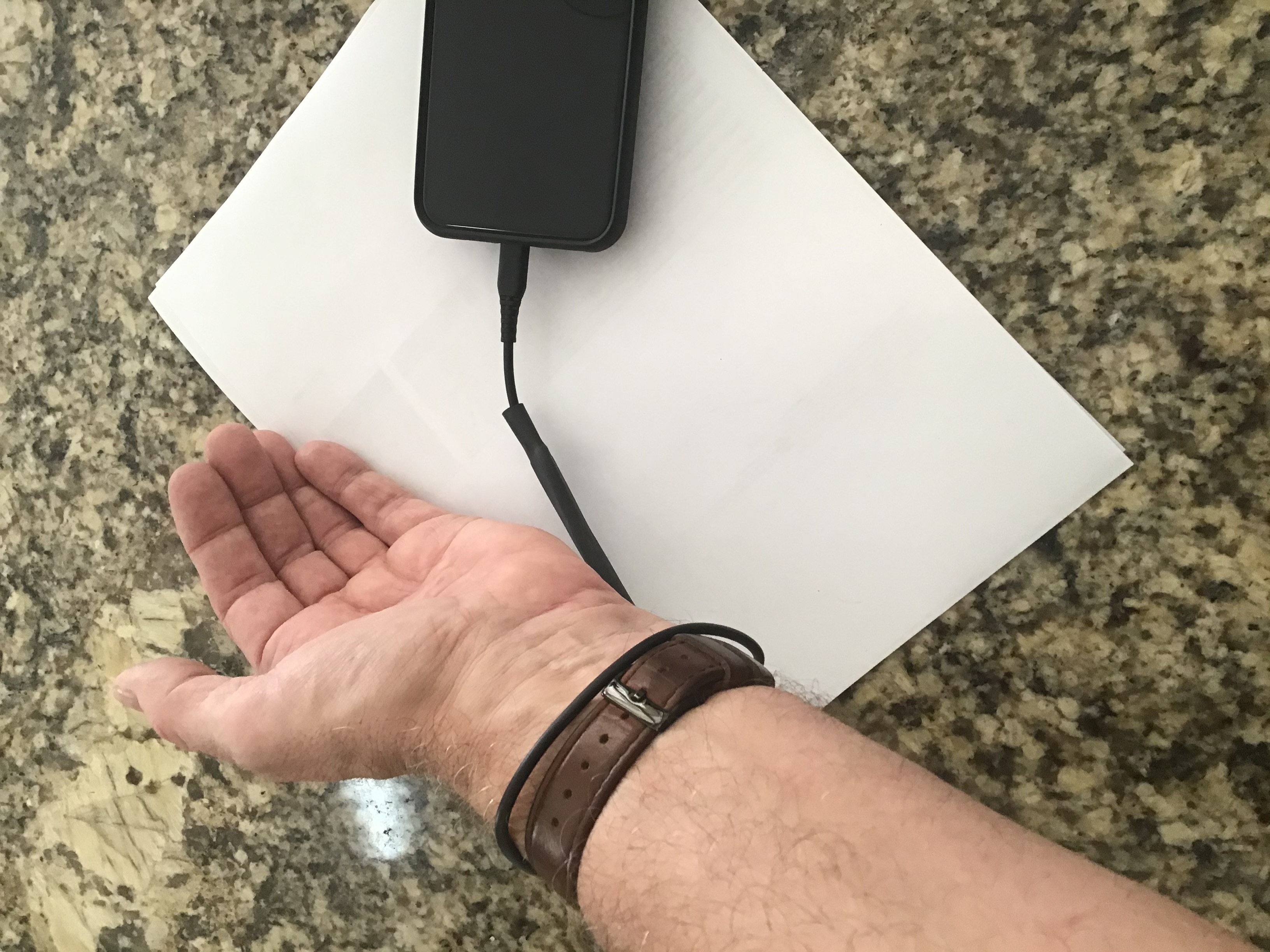
Belt and suspenders:
Apple has carefully designed the Lightning connector to prevent excessive force requirements for insertion or removal. Give the above assembly a strong yank and phone and wrist strap part company.
So a fail-safe is added in the form of a monofilament loop, one end attached to an old credit card, the other to the end of the wrist strap.
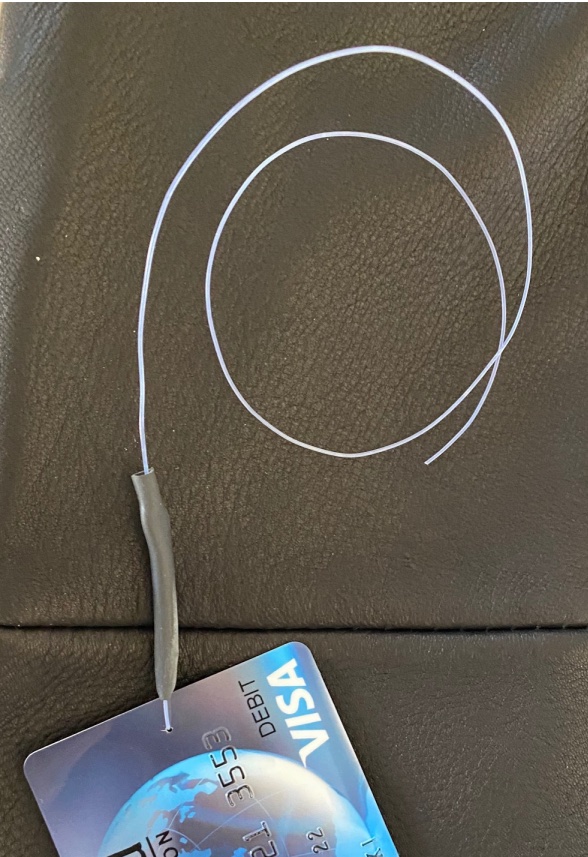
I used a very fine #60 drill to make a hole in the credit card
to permit pass-through of the length of 30lb. monofilament.
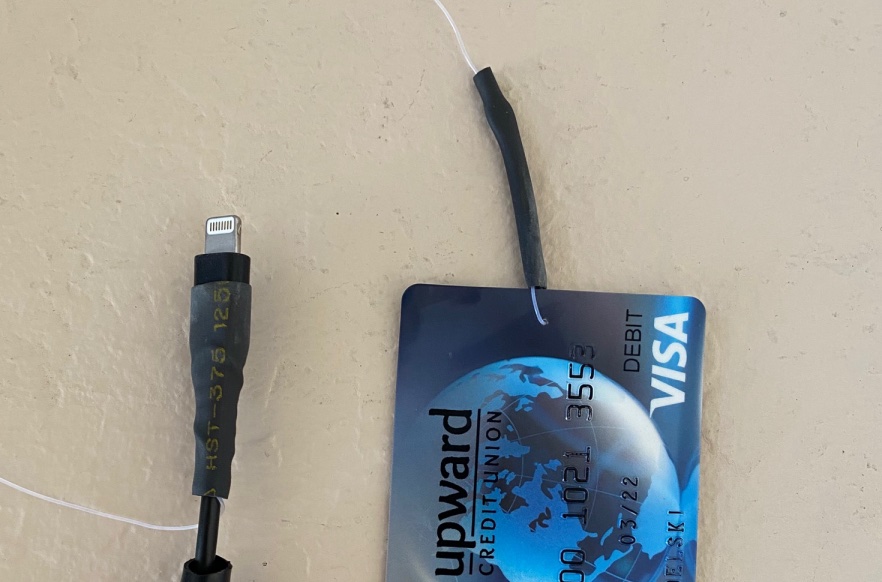
The monofilament is secured on both ends with a length of heat shrink-tubing, the tail
is reversed and a second length of larger diameter tubing is installed atop.
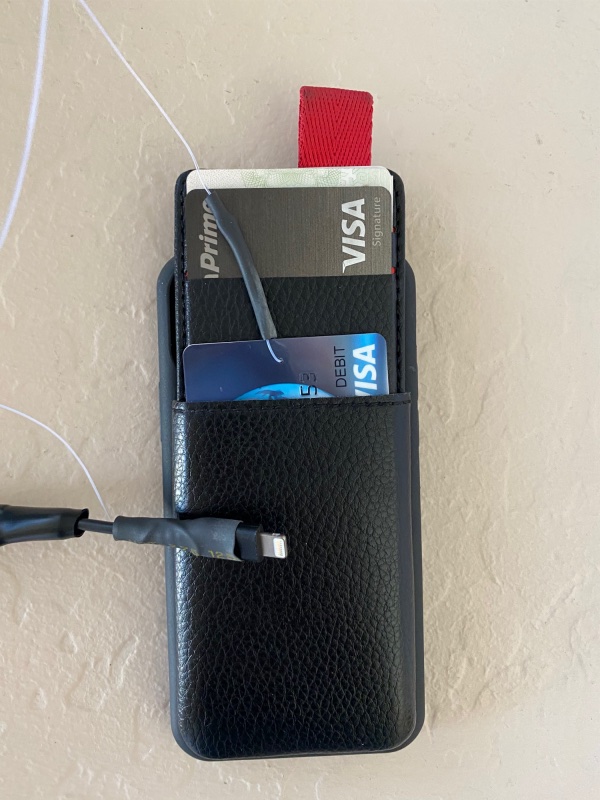
The credit card is installed in the sliding opening for credit cards,
the opening is shut and the whole assembly is very secure. In the event of a
serious yank the Lightning cable will still separate from the iPhone,
but the credit card will save all.
The credit card is actually installed with the loop inserted first, for maximum security, not as shown in the image above.
No more ‘Woopsie’.
I use a Lameeku iPhone 11 Pro wallet and am very pleased with it.
